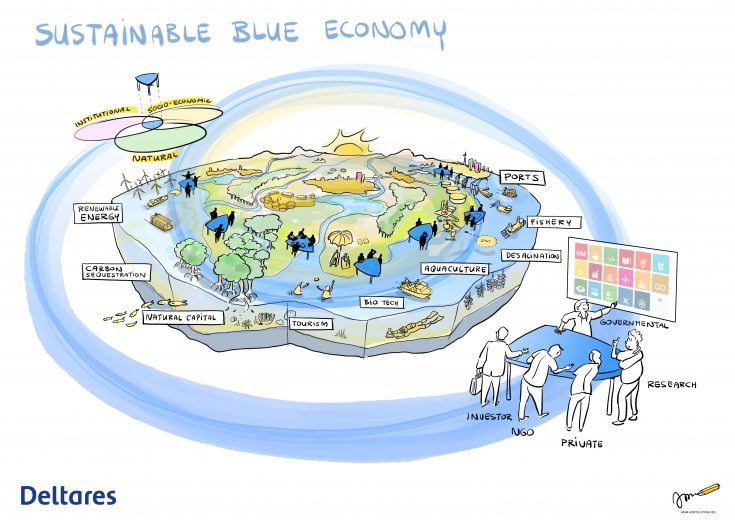Framework for sustainable investments in the Blue Economy
The importance of the Blue Economy is increasing quickly in the global economies. There is a better recognition of the potential of Blue Economy to give impulse to economic development, employment and innovation. Importantly, a sustainable Blue Economy can play a central role in alleviating the pressures on land resources, offering new possibilities to local communities and fostering climate change mitigation and adaptation. The European Commission seeks to support a shift away from less sustainable marine and maritime sectors and to increase investments in the sustainable Blue Economy. Yet, a cross-sectoral framework to characterise the sustainability of coastal and marine activities is currently non-existent.
Blue Economy Sustainability Framework
Ecorys and Deltares have been selected by the Executive Agency for Small and Medium-sized Enterprises and Directorate-General for Maritime Affairs and Fisheries, to develop a Blue Economy Sustainability Framework. There is currently no commonly accepted definition of a sustainable Blue Economy. Through an analysis of over 30 definitions, the project team proposed the following definition:
A sustainable blue economy promotes economic growth, social inclusion and improved livelihoods while ensuring the environmental sustainability of the natural capital of the oceans and seas.
As a next step 30 existing sustainability frameworks were assessed to screen for relevant criteria and indicators. Over 500 indicators were identified and prioritised. The outcomes were used to develop a preliminary set of sustainability criteria and indicators across key Blue Economy sectors around the globe. Examples of key sectors for which indicators were developed include fisheries, aquaculture, tourism, extraction of minerals, renewable energy, ports and shipping and coastal defense and flood protection.
A Sustainable Blue Economy should integrate the environmental, economic, social and governance dimensions. Therefore, Blue Economy Sustainability Framework is structed along those dimensions. The framework contains 148 indicators. From these indicators 44 can be used for all sectors; the other 104 indicators are specifically to each sector. The set of indicators was tested in a series of case studies, focusing on aquaculture, desalination, ports and extraction of minerals. Finally, the indicators were reviewed by stakeholders to check the relevance for their sector.
Sustainable investment in the Blue Economy
The Blue Economy Sustainability Framework aims to support and inform policy levers and actions to secure and promote sustainable investment in the blue economy. Eventually, it should also help investors to get a better sense of the potential impacts of their investments as to stimulate responsible investments in maritime sectors.

Next steps
As a next step Deltares and Ecorys recommend developing a common sustainability scoreboard for a blue economy investment, building on the indicators defined in the Blue Economy Sustainability Framework. This scoreboard could provide an overview of potential investors’ social and environmental performance, highlighting strengths and weaknesses of an investment project.
Through this successful collaboration, Deltares was able to further develop its Blue Economy expertise. Currently a Blue Economy portfolio is being built in which the new expertise is applied in other countries such as Mozambique and Seychelles.

